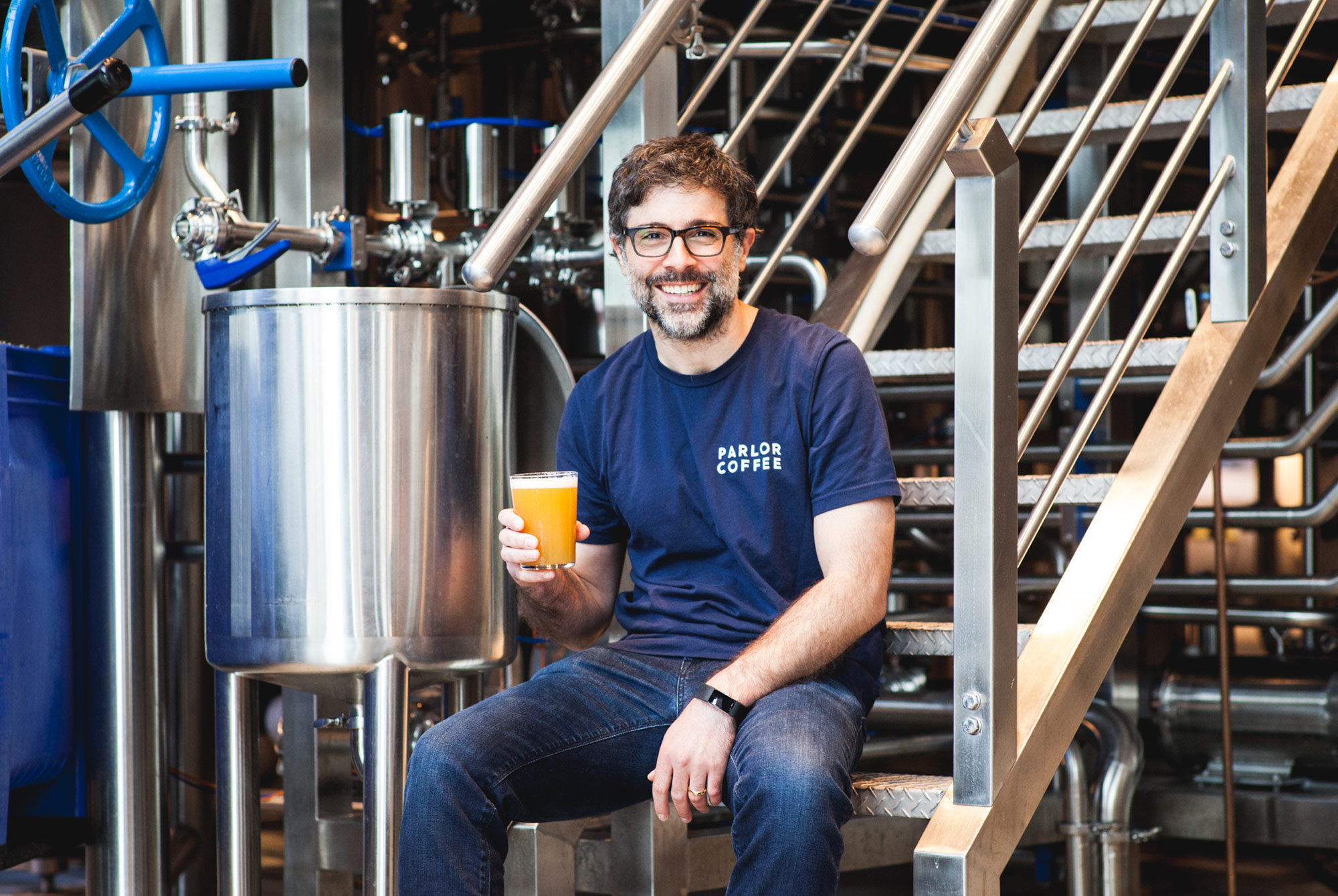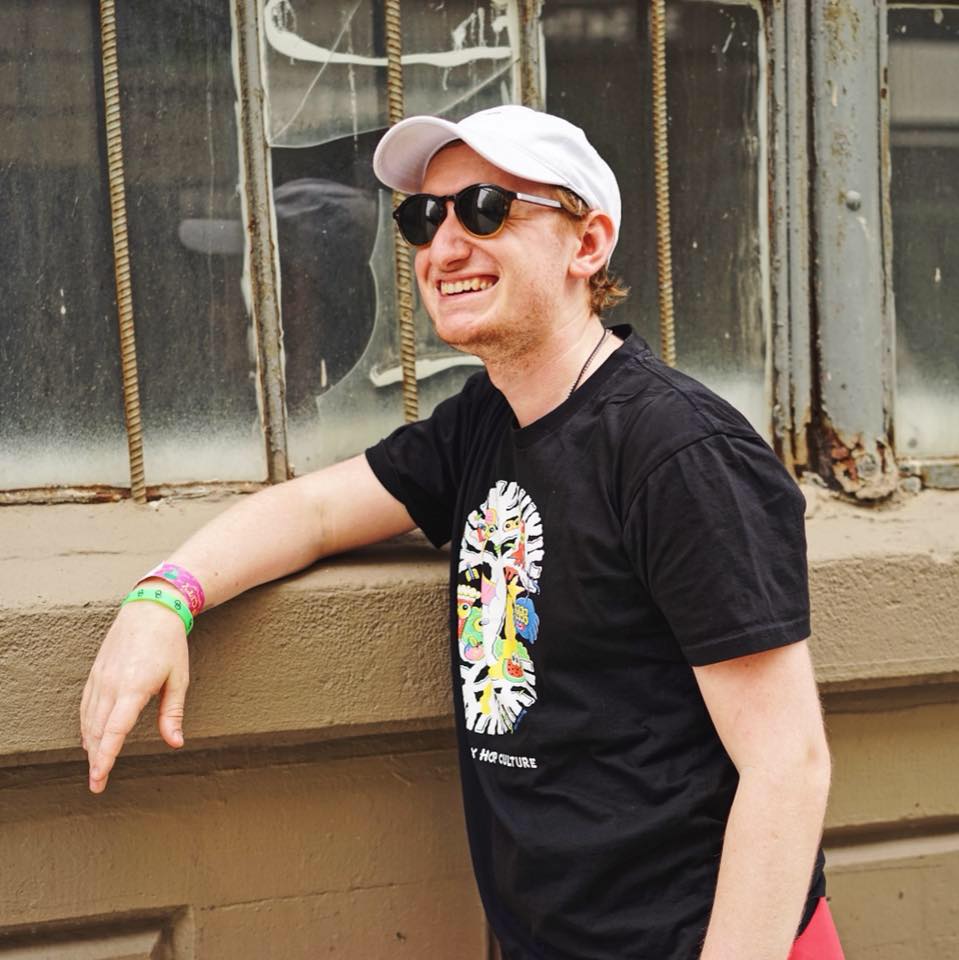Shop
Mikkeller NYC is Making Beer For Baseball Fans and Beer Nerds Alike
A look at the newest venture from Mikkeller.
Mikkeller is a beer empire. What began as a collaborative gypsy brewery, founded in 2003 by former high school physics teacher Mikkel Borg Bjergsø and journalist Kristian Klarup Keller, now includes bars, bottle shops, and restaurants around the globe, one of the most popular running clubs in the world, and physical production breweries in San Diego and, most recently, in Queens, NY. The sun never sets on Mikkeller.
A Mikkeller beer is immediately recognizable. Every can and bottle features the iconic artwork–usually a slight variation on the characters Henry and Sally–of the inimitable Keith Shore, who is based right outside of Philadelphia. Just like the endless iterations of Shore’s illustrations, Mikkeller’s beer is diverse and collaborative. Mikkel hasn’t honed in on one style but has brewed beer that is both accessible and challenging, from basic pilsners to adjunct-laden stouts. With Mikkel’s newest beer venture, he’s expanding the reach of his beer.
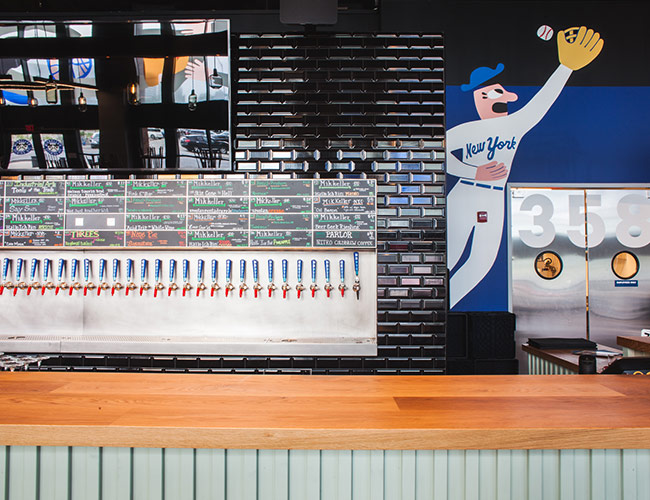
Mikkeller NYC is located in Citi Field, the home of the New York Mets, in Queens, NY. The brewery features a 20 barrel brewhouse and a taproom with 60 draft lines, an extensive and impressive bottle list, and an in-house kitchen. Opening a brewery in a ballpark meant that Mikkeller expects to serve both dedicated beer enthusiasts who are looking for a bottle of Cantillon and a Mets fan who just needs a cold beer. Jim Raras Jr., who joined as the Executive Vice President of Mikkeller NYC and was formerly the CFO at Hill Farmstead, sees this as both an opportunity to focus on the customer experience and the brewery’s hospitality. “We’re looking to make people feel comfortable,” Raras explains.
On a day when Mikkeller happened to have a collaboration brew day with Industrial Arts, we sat down with Raras to chat about the unique opportunities and challenges of running a baseball stadium brewery and why collaboration is a part of Mikkeller’s DNA.
John Paradiso: Where were you before Mikkeller NYC and what’s your current role?
Jim Raras: Immediately before this project I had the supreme good fortune of working at Hill Farmstead, of working with Shaun Hill, which was an amazing opportunity. Particularly, because before that I had no professional experience in the beer and beverage world. I remain good friends with Shaun and really owe him a lot. I started there as a finance person, the CFO of Hill Farmstead, and at that point in my life I didn’t have any kids–I do now–and my wife was never particularly enamored with living in the country, we had lived in Boston prior to that, but she understood the profound opportunity that was at hand and that it was my dream job essentially.
So we moved to an extremely rural part of Northeastern VT. Shaun is a perfectionist and works incredibly hard and I just tried to learn everything I could. After about three years there, I got wind of this project before it became a real thing, and New York and Boston were sort of the two places we were targeting in terms of moving our family and I ended up moving forward with the project and it worked out well in terms of my background.
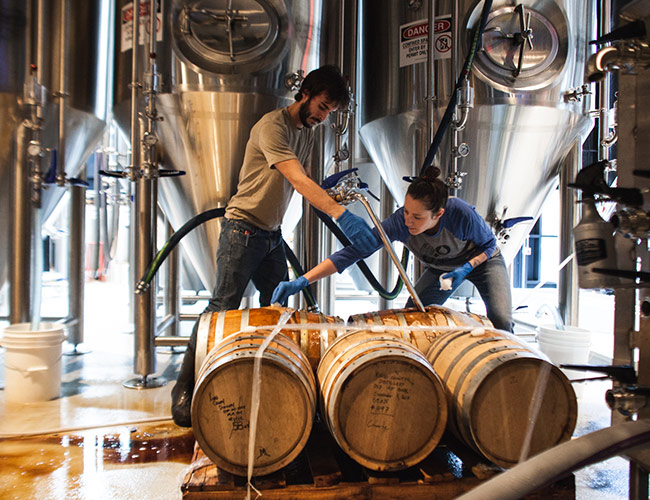
JP: How was it transitioning into the beer industry from the business world?
JR: It was great and I was really lucky, I think, because the team at Hill Farmstead is amazing and it was really engaging and motivating to be working with the best of the best every day. And I think everyone pushed each other and the one thing about that place, which comes from Shaun’s vision, is it’s uncompromising. People would ask, “What’s the biggest thing you took away from your experience there?” And it was understanding this true definition of uncompromising.
JP: What is that definition of uncompromising?
JR: It’s putting the product and the customer experience above all else. And a lot of times that’s not easy. And what’s underpinning it is getting to the point where you never think you know it all and always wanting to improve.
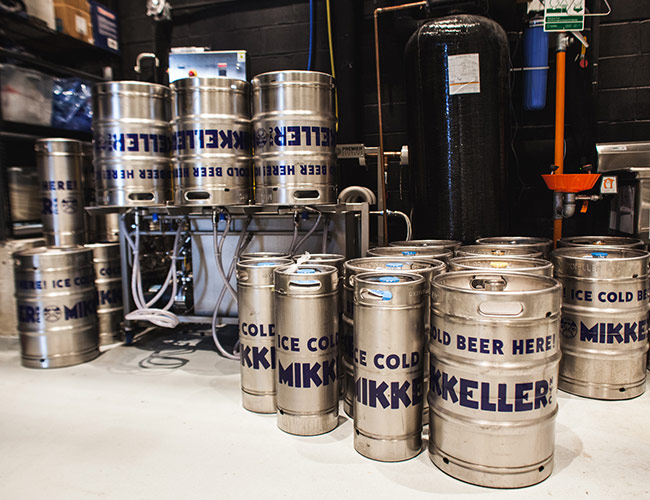
JP: The idea of accessibility seems apparent when you open a brewery in a baseball stadium. You’re not drawing exclusively craft beer fans; you’re getting a broader demographic. Was that aspect part of the decision making?
JR: Absolutely. It wasn’t, “Here’s the criteria for opening a brewery, this has to be one of them,” but when it came about as a huge opportunity and has given us a sense of responsibility. From traveling around to the different Mikkeller locations, I find that the Mikkeller brand and our spaces tend to resonate or be more conducive to people you wouldn’t consider themselves typical craft beer enthusiasts. And I think that carries through to how we define service and what good service is. The people we want on our team aren’t necessarily people coming in with a high knowledge of beer–we can teach knowledge–but we’re looking for folks with interpersonal skills, those who can make customers feel welcome.
JP: Aside from reaching a broader demographic, are there any other opportunities being a brewery in a baseball stadium?
JR: Being part of this particular baseball stadium is unique in that Citi Field really pioneered and broke new ground by bringing high-quality food options to professional sports venues. And when the Mets moved from Shea Stadium to Citi Field, the number one priority and change that was implemented was moving to a hospitality-first model. To see that there was a proof of concept on the food side got all of us really excited to replicate it on the beverage side.
JP: On the flip side, what are the challenges?
JR: If you think about building significant manufacturing capabilities for a plant, which this is essentially–we have 10,000 square feet split in half with a 20 barrel brewhouse–doing that type of manufacturing and the logistics associated with that in the space physically and then also trying to navigate around baseball games and large events can be challenging. It takes much more planning and logistical foresight than if we were in a different space.
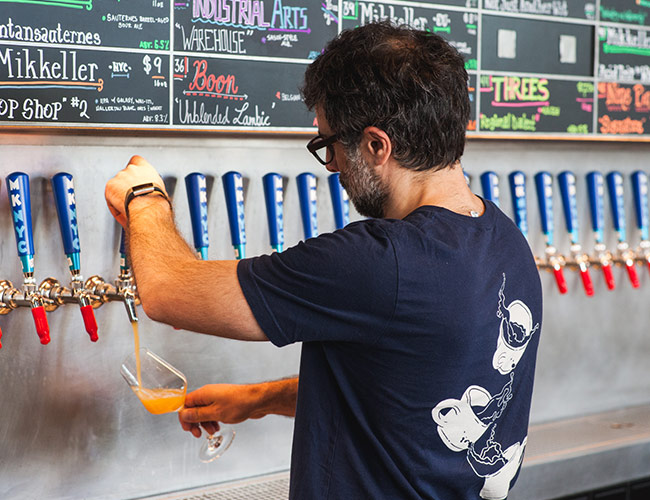
JP: So far, you’ve really only been open during the baseball season. Do you expect any change in logistics once the season is over?
JR: We’ve always envisioned this as a year-round business and we’ll be producing year-round and we always expect to have people come out here. One of the things we’ve been planning too is that once the season is over, we’ll have the opportunity to do some interesting programming and events. We’ve done tasting menus where we pair different beers with foods and we’re looking to try some events on the music side. It’s definitely challenging and way different, but I think it’s something that excites us as much as our responsibility and joy in serving the baseball crowd.
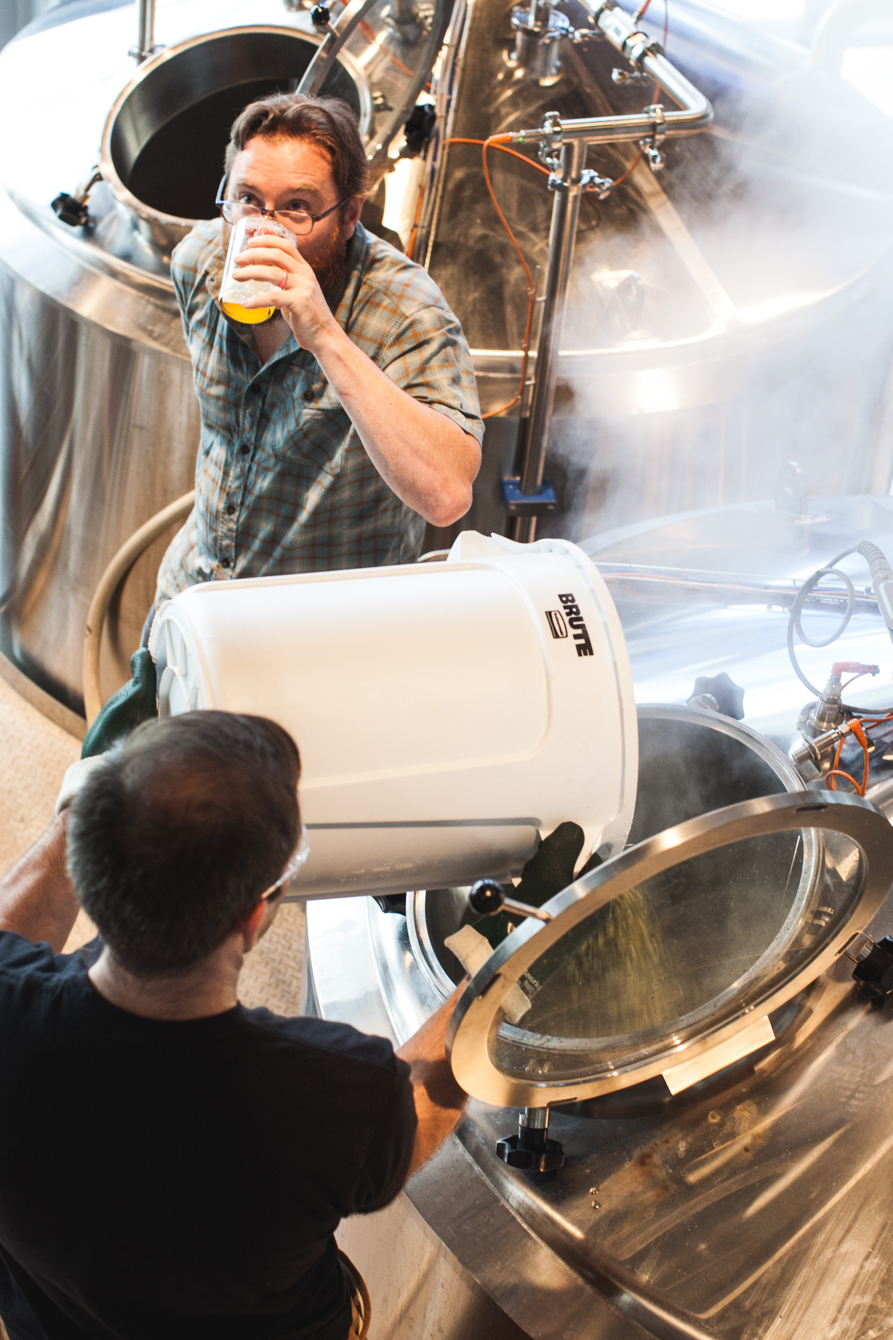
JP: What would you say is specific about the beer brewed here? Obviously there’s a throughline across the brand–it’s all coming down from Mikkel, the aesthetic and design is consistent–but what is particular about Mikkeller NYC?
JR: First off they’re unique recipes, but I do think there’s an overarching concept for what we want to do and that Mikkel has a plan and idea for where we should go. So we fit in with the overall theme and he and I are very much on the same page for what we should do stylistically, but we also decided that we didn’t want to brew the exact same beer that’s being brewed in San Diego or elsewhere.
Frankly that’d be so much easier (laughs), it would really simplify a lot of things but that’s not really what this is about. It’s about creating an experience and giving people a lot of different options. You can see with the design of the plant we have more twenty barrel fermenters, so single batch fermenters, instead of using the vertical space to do more double and triple batches, because at the end of the day we have 60 taps which, again, was one of Mikkel’s key early ideas. He wanted to showcase a lot of what the Mikkeller brand has worldwide and also give people a ton of variety. So right now we’re brewing pilsners, Kölsch, pale ales, IPAs, imperial IPAs, we just did our first kettle sours so there’s definitely some similarities but all of the beers are distinct.
JP: You’ve also had a pretty robust collaboration schedule. What was the plan behind that?
JR: I think the Mikkeller brand, and Mikkel in particular, has always been collaborative because of the roots of being a contract brewer and thinking frankly about other markets. It’s interesting because Mikkeller is never really, “Oh we’re a Danish company and we exist within these boundaries.” So I think that’s in our DNA.
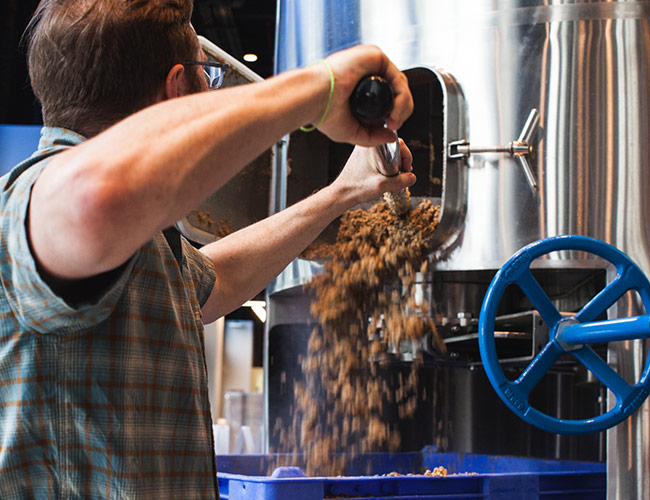
And then one of the things that’s super exciting for us is that being in New York City gives us this amazing opportunity to both work with people that live and then, because we’re so close to two airports, anyone who comes through here can come brew with us. Having smaller fermenters affords us the opportunity to sneak in another brew if someone does want to come by. Plus, we have our own canning line and a pretty efficient process of getting the artwork from Keith Shore. And we’re actually the closest Mikkeller to him because he’s just outside of Philadelphia. For instance, we’re working with Industrial Arts today so soups to nuts coming up with the whole thing it was incredibly easy and we’re just set up to be collaborative.
Liked this article? Sign up for our newsletter to get the best craft beer writing on the web delivered straight to your inbox.

